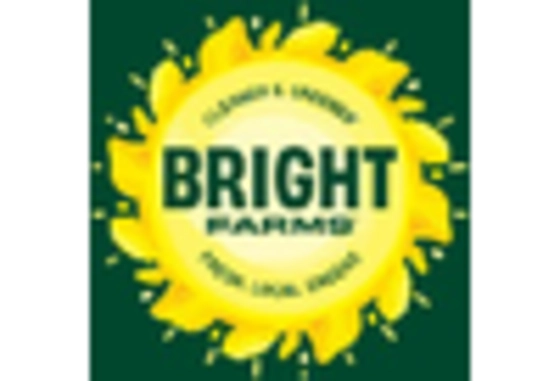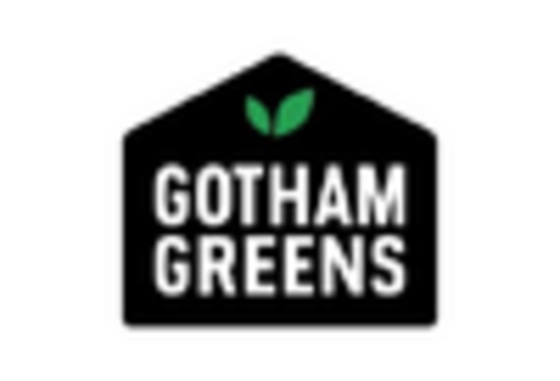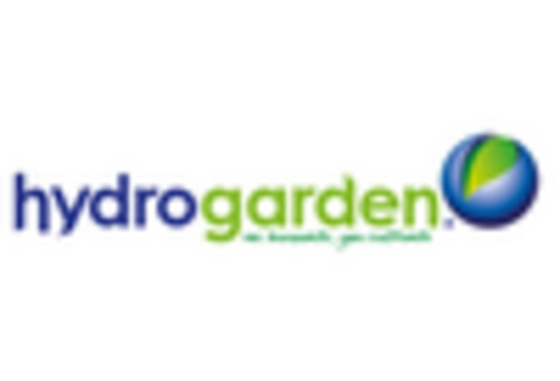Government Support and Investment
Government initiatives and investments are playing a pivotal role in the Hydroponics Technologies Market. Many governments are recognizing the potential of hydroponics to enhance food security and promote sustainable agricultural practices. Financial incentives, grants, and research funding are being allocated to support the development and adoption of hydroponic systems. This support is crucial for fostering innovation and reducing the barriers to entry for new players in the market. As public policies increasingly favor sustainable agriculture, the hydroponics sector is likely to benefit from enhanced investment and growth opportunities, positioning it as a key player in the future of food production.
Urbanization and Space Constraints
The rapid pace of urbanization is significantly influencing the Hydroponics Technologies Market. As urban populations swell, the availability of arable land diminishes, creating a pressing need for innovative agricultural solutions. Hydroponics offers a feasible alternative, enabling food production in limited spaces such as rooftops, basements, and vertical farms. This method not only maximizes space but also reduces transportation costs and carbon footprints associated with food distribution. The urban agriculture sector is projected to grow, with hydroponics playing a crucial role in meeting the food needs of city dwellers. This trend suggests a promising future for hydroponic systems as urban centers increasingly adopt these technologies.
Technological Innovations in Hydroponics
Technological advancements are a driving force in the Hydroponics Technologies Market. Innovations such as automated nutrient delivery systems, advanced lighting solutions, and IoT integration are enhancing the efficiency and productivity of hydroponic systems. For instance, the use of LED grow lights has been shown to increase crop yields while reducing energy consumption. Furthermore, the integration of data analytics allows growers to monitor and optimize conditions in real-time, leading to better resource management. The market for hydroponic technology is expected to reach several billion dollars by 2027, reflecting the increasing adoption of these technologies in both commercial and residential settings.
Increased Demand for Sustainable Agriculture
The Hydroponics Technologies Market is experiencing a surge in demand for sustainable agricultural practices. As consumers become more environmentally conscious, the need for efficient food production methods that minimize land use and water consumption is paramount. Hydroponics, which allows for the cultivation of plants without soil, utilizes up to 90 percent less water than traditional farming. This efficiency is particularly appealing in regions facing water scarcity. The market is projected to grow significantly, with estimates suggesting a compound annual growth rate of over 20 percent in the coming years. This trend indicates a shift towards more sustainable food systems, positioning hydroponics as a viable solution to meet the increasing food demands of a growing population.
Health Consciousness and Fresh Produce Demand
The growing health consciousness among consumers is propelling the Hydroponics Technologies Market forward. There is an increasing preference for fresh, organic produce, which hydroponically grown crops can readily provide. Hydroponics allows for the cultivation of pesticide-free vegetables and fruits, appealing to health-oriented consumers. Market data indicates that the organic food sector is expanding rapidly, with hydroponics positioned to capture a significant share of this market. As consumers seek out healthier food options, the demand for hydroponically grown produce is likely to rise, further driving the growth of the hydroponics market.

















Leave a Comment